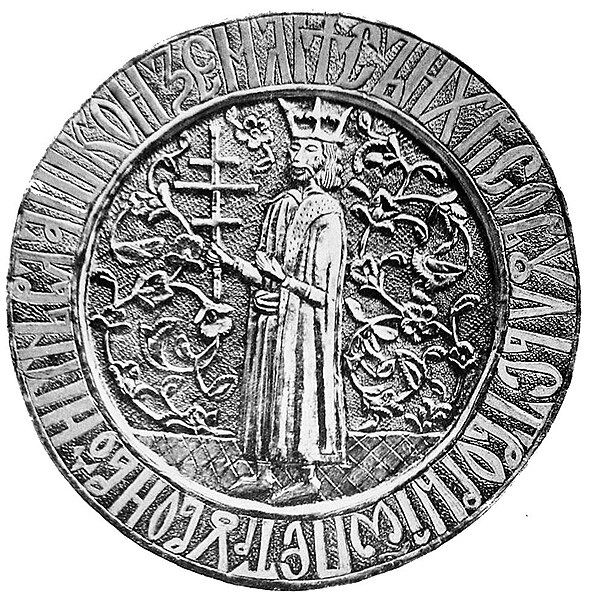Banul Mărăcine or Mărăcină, common rendition of Barbu III Craiovescu, Barbu Mărăcine or Barbu Basarab, was a historical figure in Wallachia, who claimed the title of Prince. He was one of several Craiovești pretenders to the throne, a category which also included his father, Preda Craiovescu. Mărăcine himself entered historical record in 1532, when, as an opponent of Prince Vlad VI, he had his estate confiscated. He returned to favor later that year, with the crowning of Vlad Vintilă de la Slatina. Like Preda before him, Mărăcine served as Ban of Oltenia, becoming the last of his family to hold that title. According to various accounts, he turned against his new lord, from organizing armed resistance in Oltenia to involving himself in Vlad Vintilă's assassination. He was able to maintain his position following the crowning of Radu Paisie, but was eventually toppled by the latter in mid-1535.

Teodosie's body being held up by his mother, Princess Milica, in a contemporary votive icon. The Prince's death transferred his claim to collateral Craiovești, including Mărăcine
Matei Millo in drag, appearing as a French lady in V. A. Urechia's Banul Mărăcine. Photograph by Carol Szathmari
Radu VII Paisie, officially Radul voievod(a) (Church Slavonic: Радул воєвода; Greek: Ῥαδουλ-Βοδα, romanized: Radul-Voda), also known as Radu vodă Măjescul, Radu vodă Călugărul, Petru I, and Petru de la Argeș (ca. 1500 – after 1545), was Prince of Wallachia almost continuously from June 1535 to February 1545. A man of uncertain origins, he depicted himself as an heir to the House of Basarab and the Drăculești: the son of Prince Radu the Great and half-brother of Vlad Vintilă and Radu of Afumați. The scholar Nicolaus Olahus partly supported this account and further claimed that Paisie was his own cousin. The descent is endorsed by some modern historians, whereas others suggest that Paisie was a regular member of the boyar class, or even a fishmonger. He is known to have been a monk of the Wallachian Orthodox Church before his coronation.
Radu Paisie as ktitor. David and Radoslav's fresco in the infirmary of Cozia Monastery
Mural of Ottoman Army soldiers, at Petru Rareș's Moldovița Monastery
Paisie in an 18th-century mural at his Gura (Valea) Monastery
Paisie's other seal, depicting him alone






